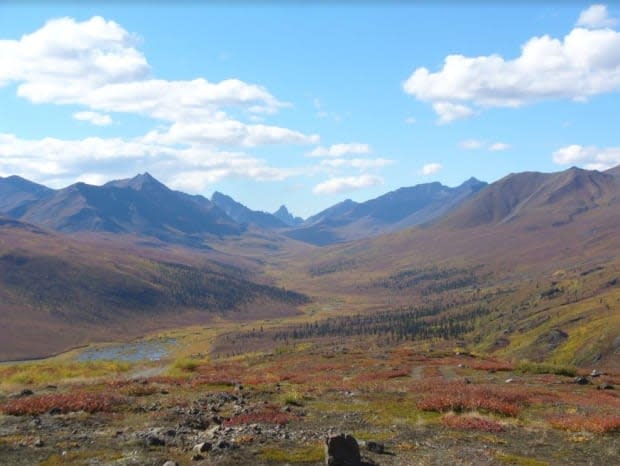'A blueprint for stewardship': Commission releases draft land use plan for the Dawson region

The Dawson Regional Planning Commission has released its draft land use plan, which lays the groundwork for how roughly 10 per cent of Yukon's land mass should be managed in the future.
"This draft plan is guided by sustainable development and stewardship and is intended to reflect the values and interests of the community," said Debbie Nagano, the chair of the commission, during an event in Dawson City. "It is designed to enable the people in the planning region to build a diverse … economy while maintaining rich cultural legacies."
Land use plans seek to clarify what can — or can't — happen in a region by balancing conservation values and industrial interests.
Stemming from Tr'ondëk Hwëch'in's final agreement, the draft land use plan, called "On the Land We Walk Together"/ "Nän käk ndä tr'ädäl," divides roughly 40,000 square kilometres of land in the Dawson area into 23 different blocks — or management areas.
There are checks and balances for each area. It basically works like this: the higher the cultural or ecological value, the higher the level of environmental protection. The fewer values a given area holds, conversely, the more likely shifting scales of industrial activity are permitted.
According to the draft plan, 39.3 per cent of the region has some level of environmental protection. This doesn't include territorial parks. Tombstone Territorial Park, for instance, is automatically off-limits to industrial development (the park represents 5.3 per cent of the planning area.)
The remaining land included in the planning region — roughly 55 per cent — would be open to various levels of industrial development. According to the report, these areas would be subject to "special and general management direction and monitoring of cumulative effects."
Nagano said the draft plan is founded on the principle of collaboration.
"It is our hope that this plan will form a blueprint for stewardship of the Dawson region and manage the land, water and resources," she said.
Yukon government implements temporary staking withdrawal
Just before the draft plan was publicly released, the Yukon government announced it's implementing staking withdrawals in areas where conservation values are present.
The staking moratorium corresponds with findings included in the draft plan and affects roughly 50 per cent of the planning region, according to a news release.
Staking withdrawals have been called for by various special interest groups and First Nations in recent months, and the vice-chair of the commission resigned last year over the government's apparent refusal to carry out such a moratorium.
John Streicker, minister of the Department of Energy, Mines and Resources, said the Yukon government is following through with a commitment it made early on in the process to implement staking withdrawals.
"I think that land use planning is so important for all of us," he said. "It provides clarity for how we're going to live and work and play on the land. It's here for how we protect our environment, it's here for how we maintain our culture, it's here for how we have work on the land."
The Yukon government-implemented withdrawals are time limited to one year. That's because the commission could change tack and revise certain land allotments and recommendations.
Yukoners are able to weigh-in on the draft plan until Nov. 1.
A final plan is slated to be completed in 2022.

